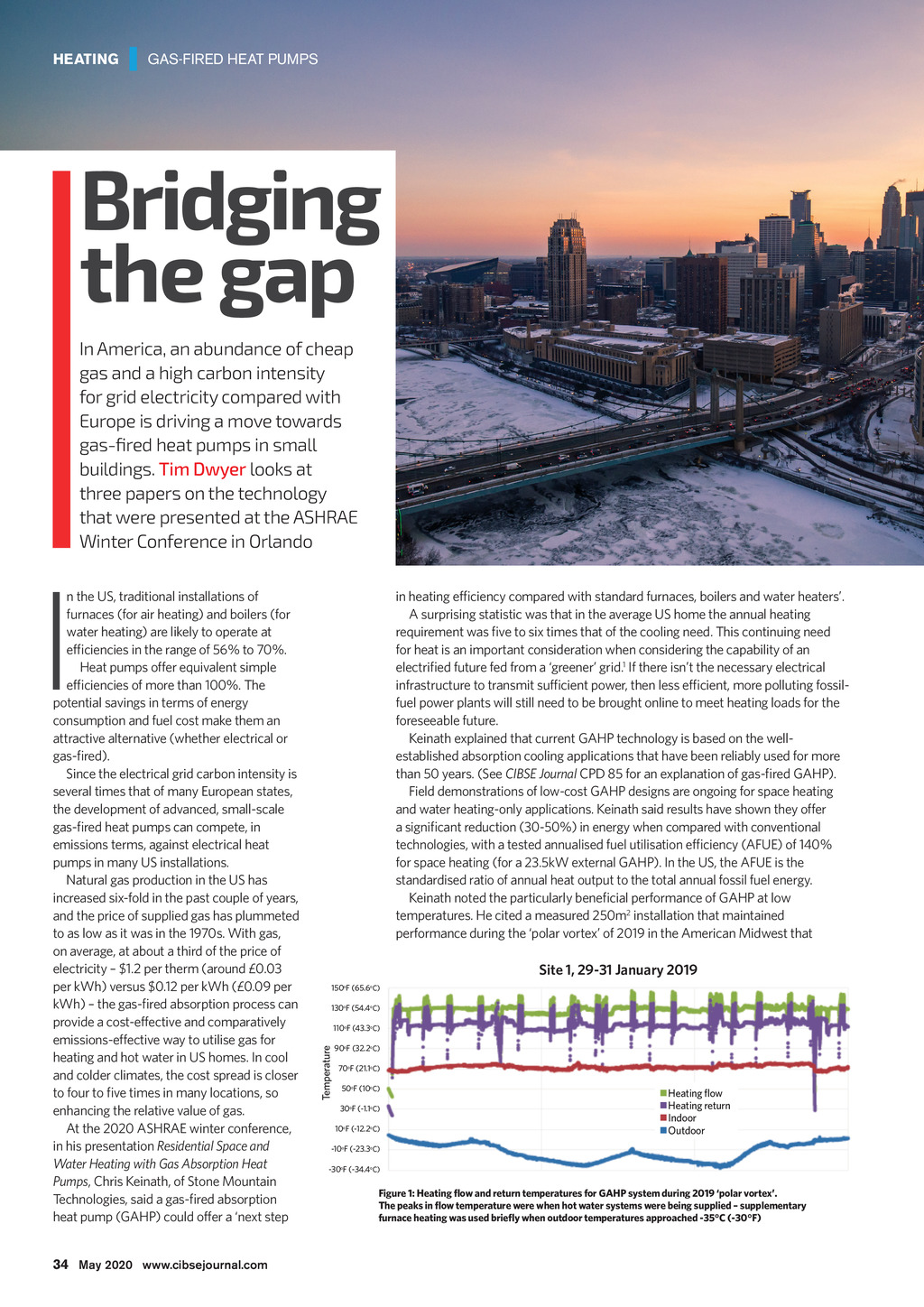




HEATING | GAS-FIRED HEAT PUMPS Bridging the gap In America, an abundance of cheap gas and a high carbon intensity for grid electricity compared with Europe is driving a move towards gas-fired heat pumps in small buildings. Tim Dwyer looks at three papers on the technology that were presented at the ASHRAE Winter Conference in Orlando I in heating efficiency compared with standard furnaces, boilers and water heaters. A surprising statistic was that in the average US home the annual heating requirement was five to six times that of the cooling need. This continuing need for heat is an important consideration when considering the capability of an electrified future fed from a greener grid.1 If there isnt the necessary electrical infrastructure to transmit sufficient power, then less efficient, more polluting fossilfuel power plants will still need to be brought online to meet heating loads for the foreseeable future. Keinath explained that current GAHP technology is based on the wellestablished absorption cooling applications that have been reliably used for more than 50 years. (See CIBSE Journal CPD 85 for an explanation of gas-fired GAHP). Field demonstrations of low-cost GAHP designs are ongoing for space heating and water heating-only applications. Keinath said results have shown they offer a significant reduction (30-50%) in energy when compared with conventional technologies, with a tested annualised fuel utilisation efficiency (AFUE) of 140% for space heating (for a 23.5kW external GAHP). In the US, the AFUE is the standardised ratio of annual heat output to the total annual fossil fuel energy. Keinath noted the particularly beneficial performance of GAHP at low temperatures. He cited a measured 250m2 installation that maintained performance during the polar vortex of 2019 in the American Midwest that Site 1, 29-31 January 2019 150oF (65.6oC) 130oF (54.4oC) 110oF (43.3oC) Temperature n the US, traditional installations of furnaces (for air heating) and boilers (for water heating) are likely to operate at efficiencies in the range of 56% to 70%. Heat pumps offer equivalent simple efficiencies of more than 100%. The potential savings in terms of energy consumption and fuel cost make them an attractive alternative (whether electrical or gas-fired). Since the electrical grid carbon intensity is several times that of many European states, the development of advanced, small-scale gas-fired heat pumps can compete, in emissions terms, against electrical heat pumps in many US installations. Natural gas production in the US has increased six-fold in the past couple of years, and the price of supplied gas has plummeted to as low as it was in the 1970s. With gas, on average, at about a third of the price of electricity $1.2 per therm (around 0.03 per kWh) versus $0.12 per kWh (0.09 per kWh) the gas-fired absorption process can provide a cost-effective and comparatively emissions-effective way to utilise gas for heating and hot water in US homes. In cool and colder climates, the cost spread is closer to four to five times in many locations, so enhancing the relative value of gas. At the 2020 ASHRAE winter conference, in his presentation Residential Space and Water Heating with Gas Absorption Heat Pumps, Chris Keinath, of Stone Mountain Technologies, said a gas-fired absorption heat pump (GAHP) could offer a next step 90oF (32.2oC) 70oF (21.1oC) 50oF (10oC) 30oF (-1.1oC) 10oF (-12.2oC) n Heating flow n Heating return n Indoor n Outdoor -10oF (-23.3oC) -30oF (-34.4oC) Figure 1: Heating flow and return temperatures for GAHP system during 2019 polar vortex. The peaks in flow temperature were when hot water systems were being supplied supplementary furnace heating was used briefly when outdoor temperatures approached -35C (-30F) 34 May 2020 www.cibsejournal.com CIBSE May20 pp34-37 Supp GAHP.indd 34 24/04/2020 16:31